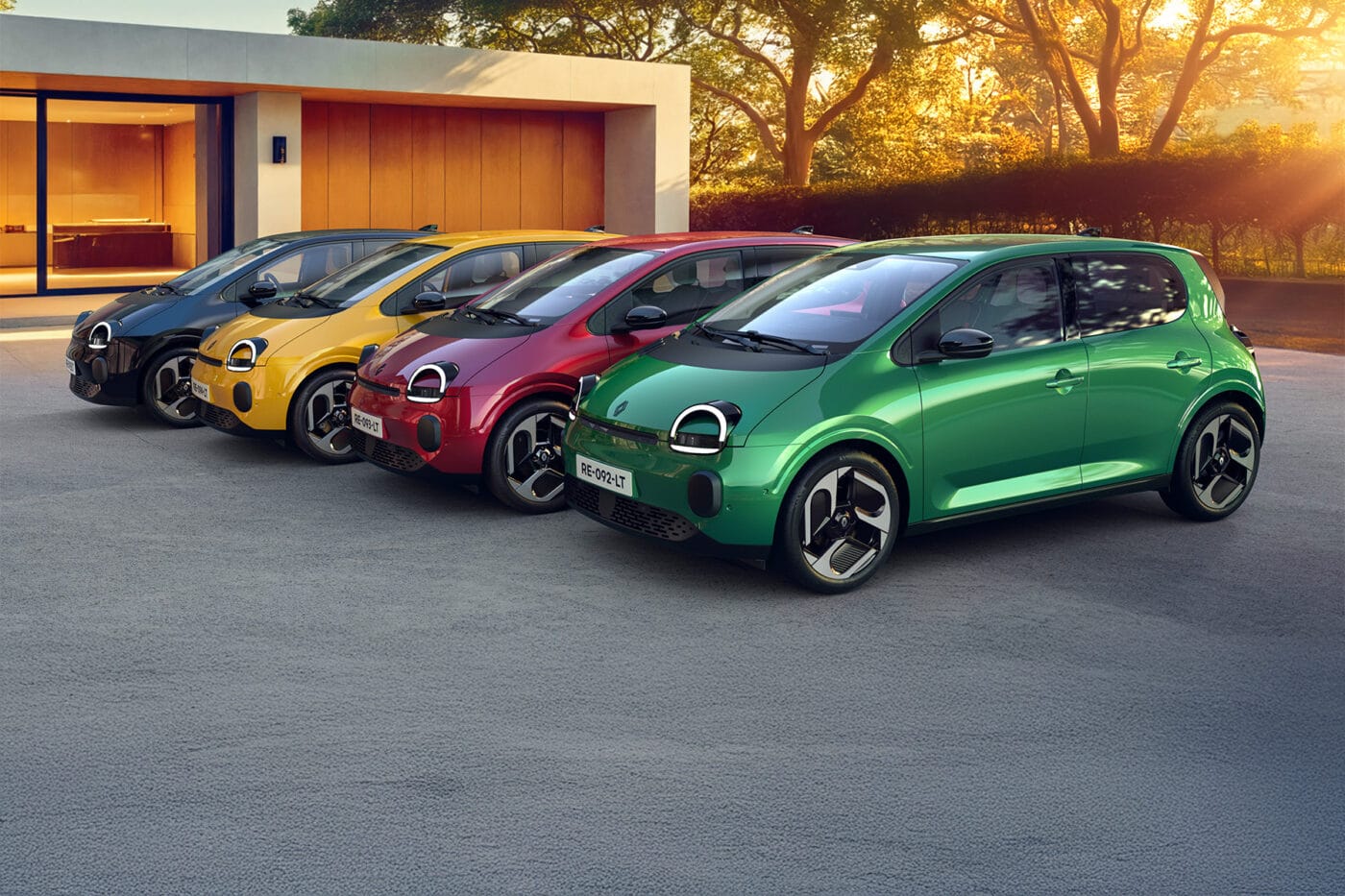
World premiere of the Twingo E-Tech Electric: Renault’s “game changer” for electric city cars
Renault openly acknowledges that there are currently relatively few small cars on the market – whether combustion or electric. “Given the difficulty of combining competitive advantage, regulatory compliance and modern customer expectations, most manufacturers have simply withdrawn from this segment,” the company says. In other words, developing and producing small cars is often not worth it, as customers are unlikely to pay the price such vehicles would need to cost.
At a time when many carmakers are shifting towards higher-margin, premium segments, Renault says it sees the gap in the small car market as “a major growth opportunity”. Following the electric revival of the Renault 5, the company has now reintroduced the Twingo – again as a fully electric model.
Renault continued to offer a Twingo until 2024, but the once-iconic model of the 1990s had become rather generic in recent years. The 2023 concept study, however, made it clear that the new fourth generation would return to its roots. “To bring the spirit of the Twingo to life, the new model adopts the DNA of the first generation, enhanced with a unique, contemporary flair,” Renault explains.
Renault promises “the best electric experience in the A-segment”
The powertrain, however, bears little resemblance to that of the original. As the name suggests, the Twingo E-Tech Electric is powered purely by electricity. The motor delivers 60 kW and propels the 1,200-kilogram Twingo from 0 to 50 kph in 3.85 seconds – and to 100 kph in 12.1 seconds. The top speed is limited to 130 kph. Renault describes the car as offering “the best electric experience in the A-segment” and “affordable electric technologies and practical services that make everyday use easier and encourage the switch to electric mobility.”
For a small electric car, battery design is key – it determines both range and cost. It is thus no surprise that Renault, unlike with the Renault 5, is using more affordable and robust LFP cells. The company only announced in 2024 that it would adopt lithium iron phosphate chemistry. The cells, supplied by CATL, are integrated directly into the pack using cell-to-pack technology and provide a usable energy content of 27.5 kWh, giving a WLTP range of up to 263 kilometres.
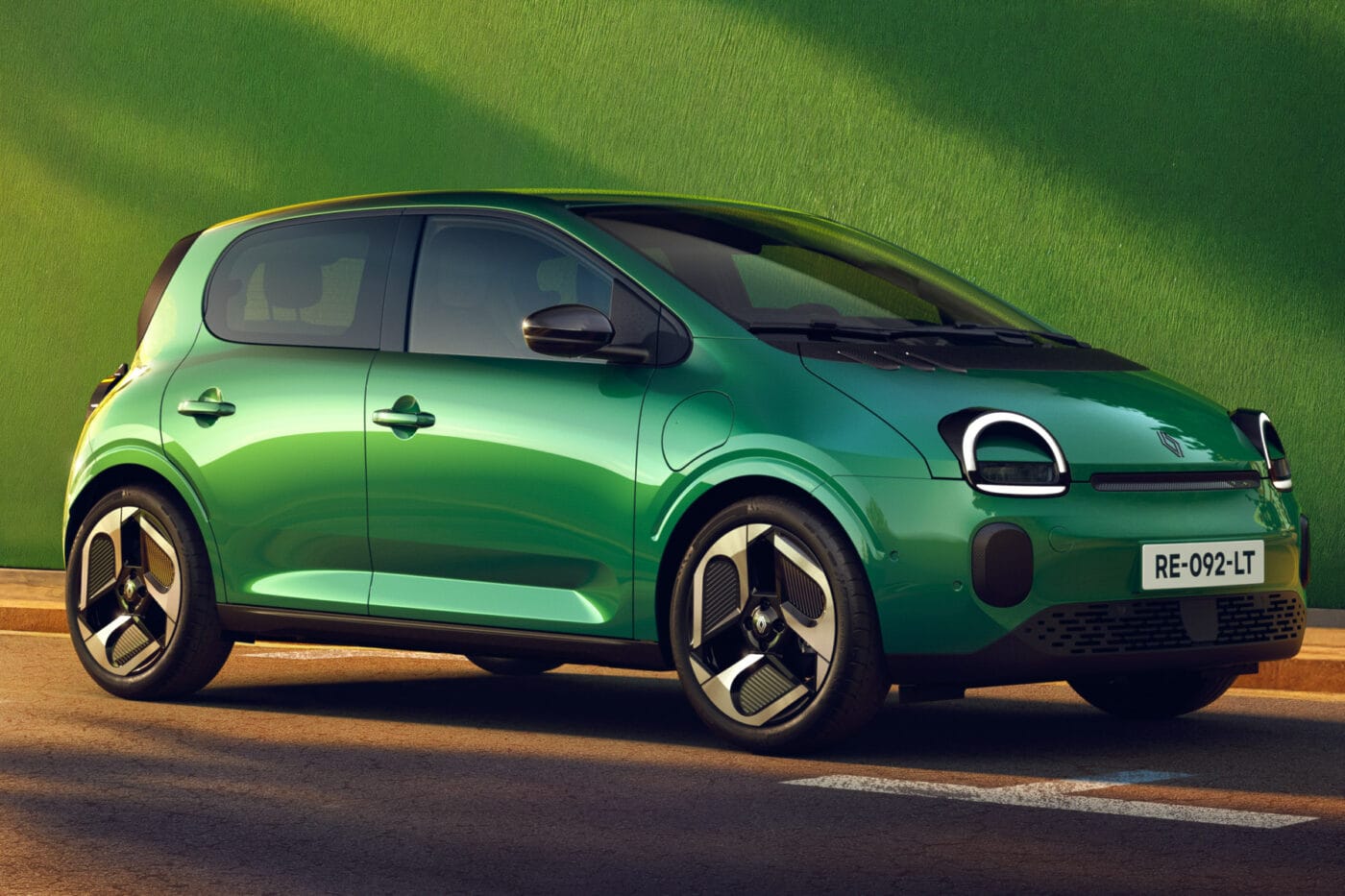

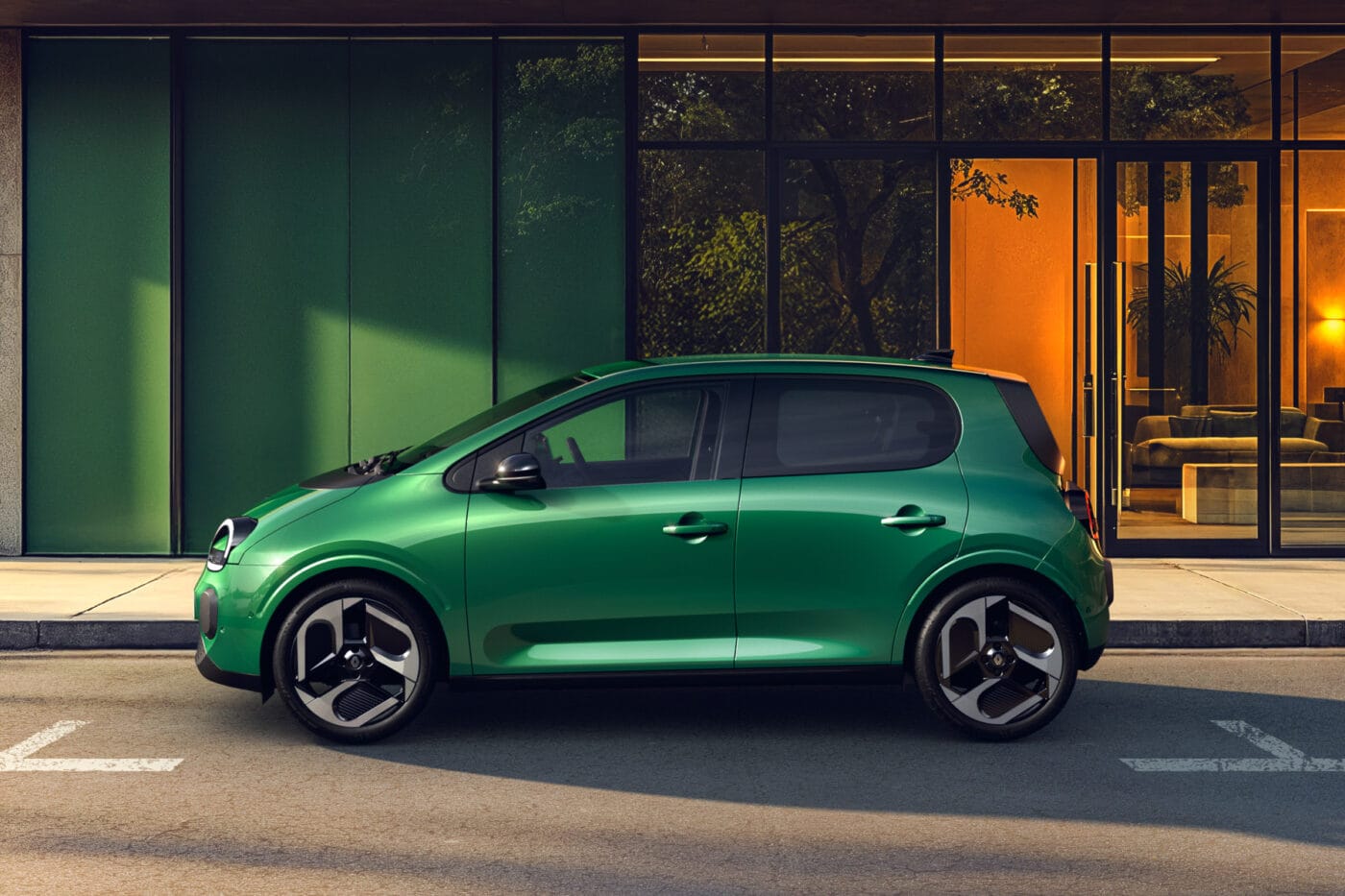
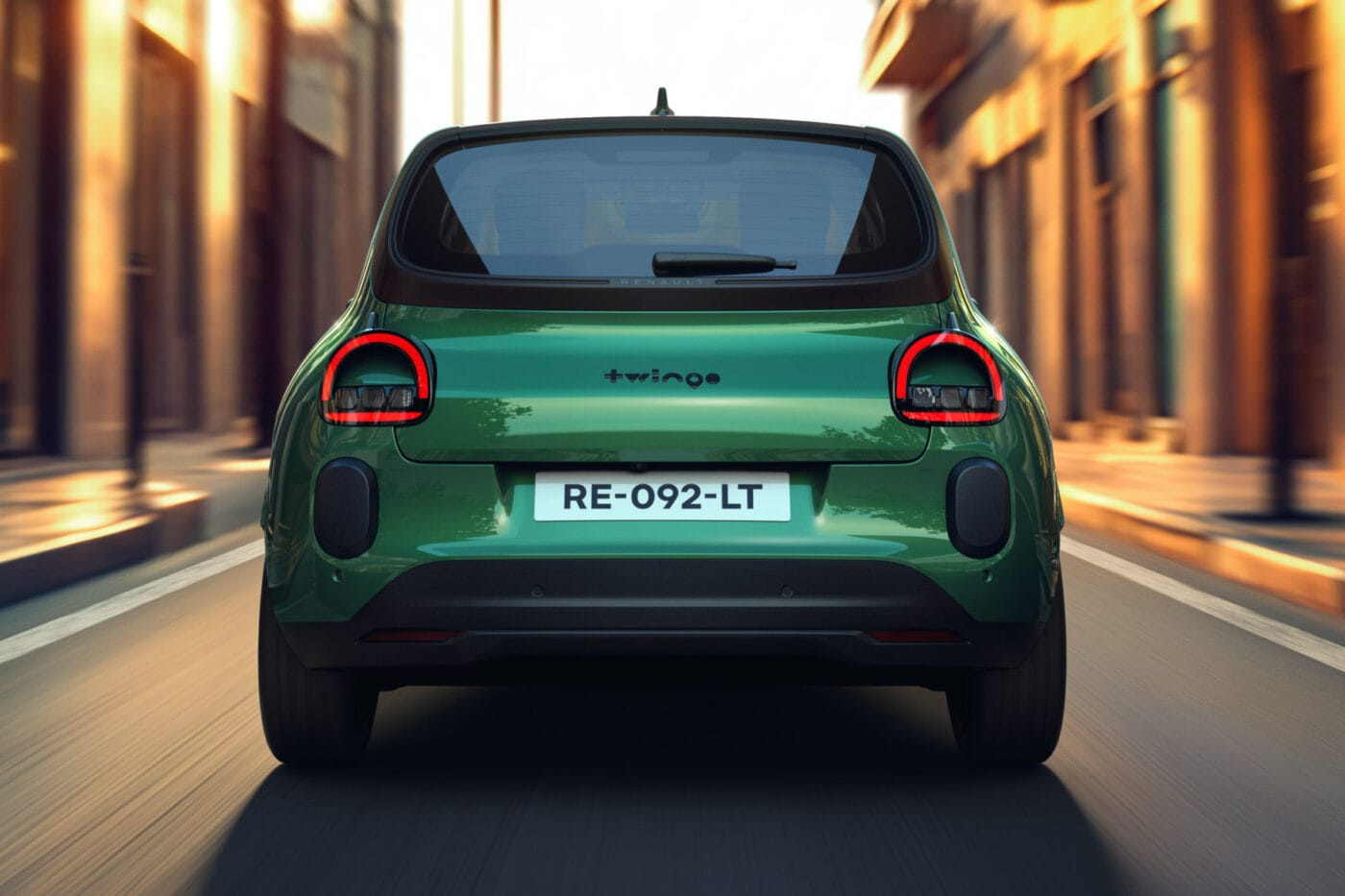

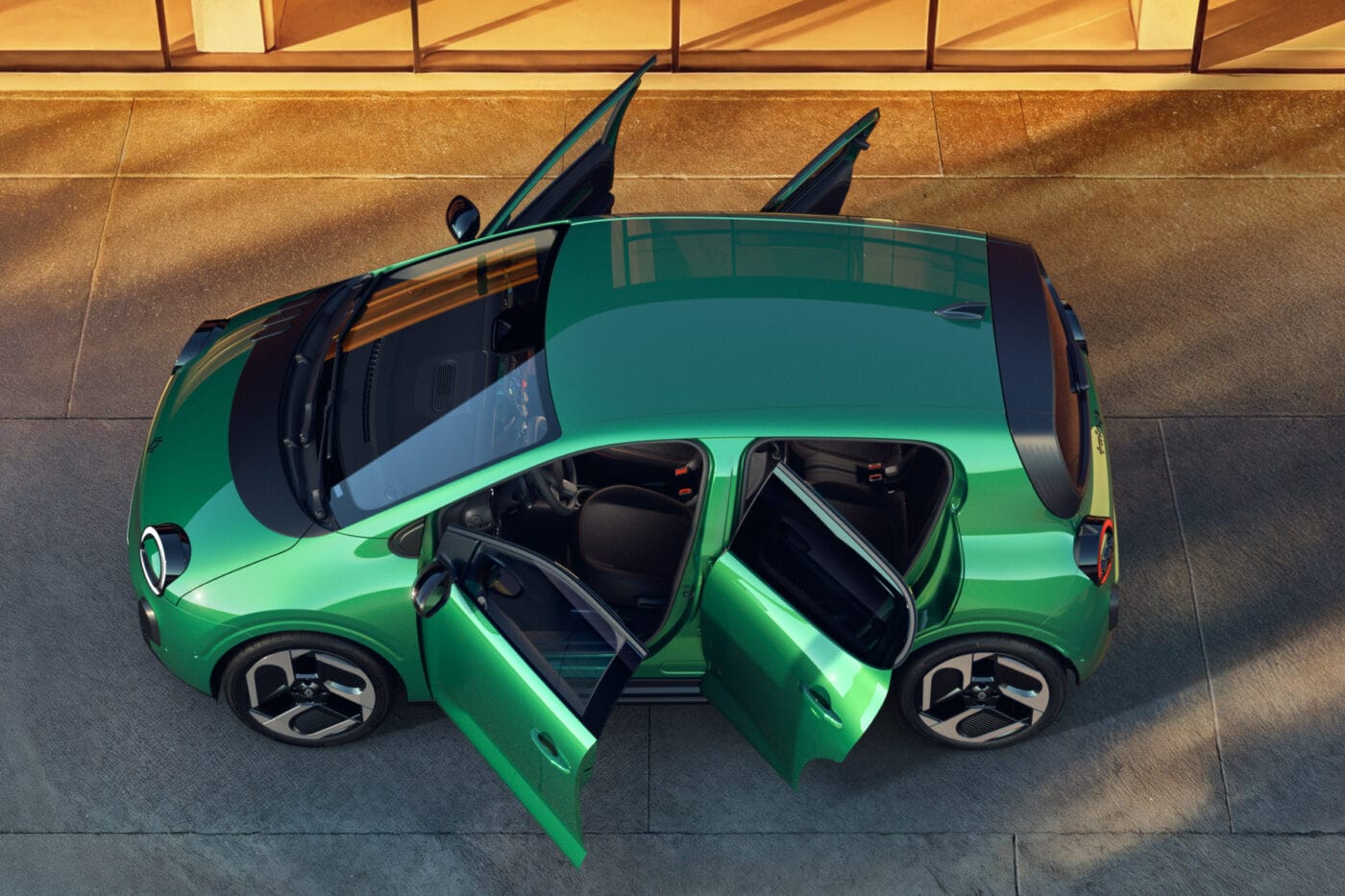
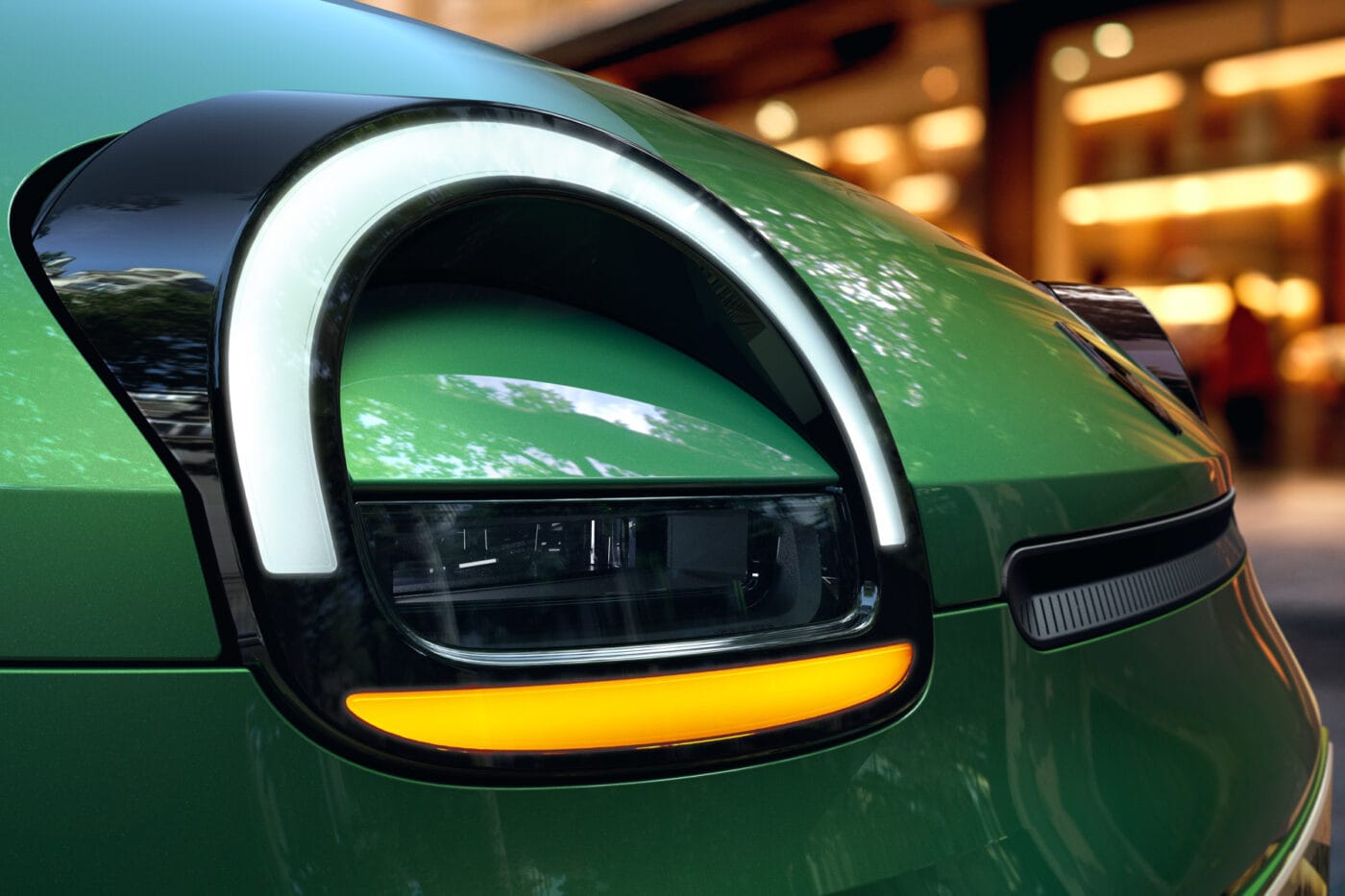



While some customers might prefer greater range, that would conflict with the car’s affordability target. Renault calls it “an ideal balance of cost and range for urban use”. Thanks to improved pack-level energy density and lower-cost cells, battery costs are around 20 per cent lower. “All these factors played an important role in developing a vehicle that is affordable to buy and economical to run – and capable of replacing an equivalent petrol-powered model,” Renault notes.
Crucially, the engineers avoided cutting corners in the wrong places. LFP cells are more sensitive to cold than NMC batteries, meaning power and charging performance can drop significantly at low temperatures if the pack is not heated. Unlike Stellantis’ CMP-based small EVs, Renault has included both cabin and battery preconditioning, which can be activated via app. The navigation system also preconditions the battery when a fast-charging stop is added to a route.
| Twingo E-Tech Electric | |
|---|---|
| Drive | FWD |
| Power output | 60 kW |
| Torque | 175 Nm |
| Acceleration | 12.1 s |
| Top speed | 130 kph |
| WLTP range | 263 km |
| Battery | 27.5 kWh |
| Charging capacity DC | 50 kW |
| Charging time DC 10-80% | 30 min |
| Price | less than 20,000 euros |
At the charger, the Twingo Electric supports up to 50 kW DC – even the base version offers this as standard in Germany. A 10–80 per cent charge takes around 30 minutes. With the 11 kW AC charger, a full 10–100 per cent charge takes 2 hours 35 minutes. The onboard charger is also bidirectional: external devices can draw up to 3.7 kW using a Vehicle-to-Load adapter. Renault has not yet confirmed whether the Twingo will also support Vehicle-to-Grid capability, as in the Renault 5.
Cost optimisation is clearly visible in some details. From the Techno trim upwards, the Twingo offers one-pedal driving and steering-wheel paddles to adjust regeneration levels. The base Evolution trim does without these. However, it includes the OpenR Link infotainment system with integrated Google features such as the familiar Google Maps EV route planner. Renault’s voice assistant “Reno”, already available in the Renault 5 E-Tech and Renault 4 E-Tech, also appears in the Twingo. It can control vehicle functions (“Hey Reno, schedule a charge for tomorrow at 8 a.m.”) and, through integration with ChatGPT’s 4.0-mini version, provide easy-to-understand general knowledge answers.
Modern technology is now essential to meet customer expectations for new vehicles. Still, a city car must remain compact and practical. At 3.79 metres long, 1.72 metres wide and 1.49 metres high with a 2.49-metre wheelbase, the 2025 Twingo stays small by today’s standards. The original model measured 3.43 by 1.63 by 1.42 metres, though it was smaller still. One big difference: the modern Twingo has five doors. Some of the concept’s design elements did not make it to production – such as the concealed rear handles referencing the original. Conventional door handles are more practical, but they do lessen the retro charm.
Nonetheless, the design remains well balanced and modern, evolving the original look rather than merely copying it.
Renault says it has used the extra centimetres to maximise practicality. The boot offers up to 360 litres of storage, expanding to over 1,000 litres with the rear seats folded. The front passenger seat can also fold flat to carry items up to two metres long. Beneath the floor sits a 50-litre storage compartment, suitable for cables or smaller items. The interior offers numerous cubbies, which can be personalised with 3D-printed accessories.
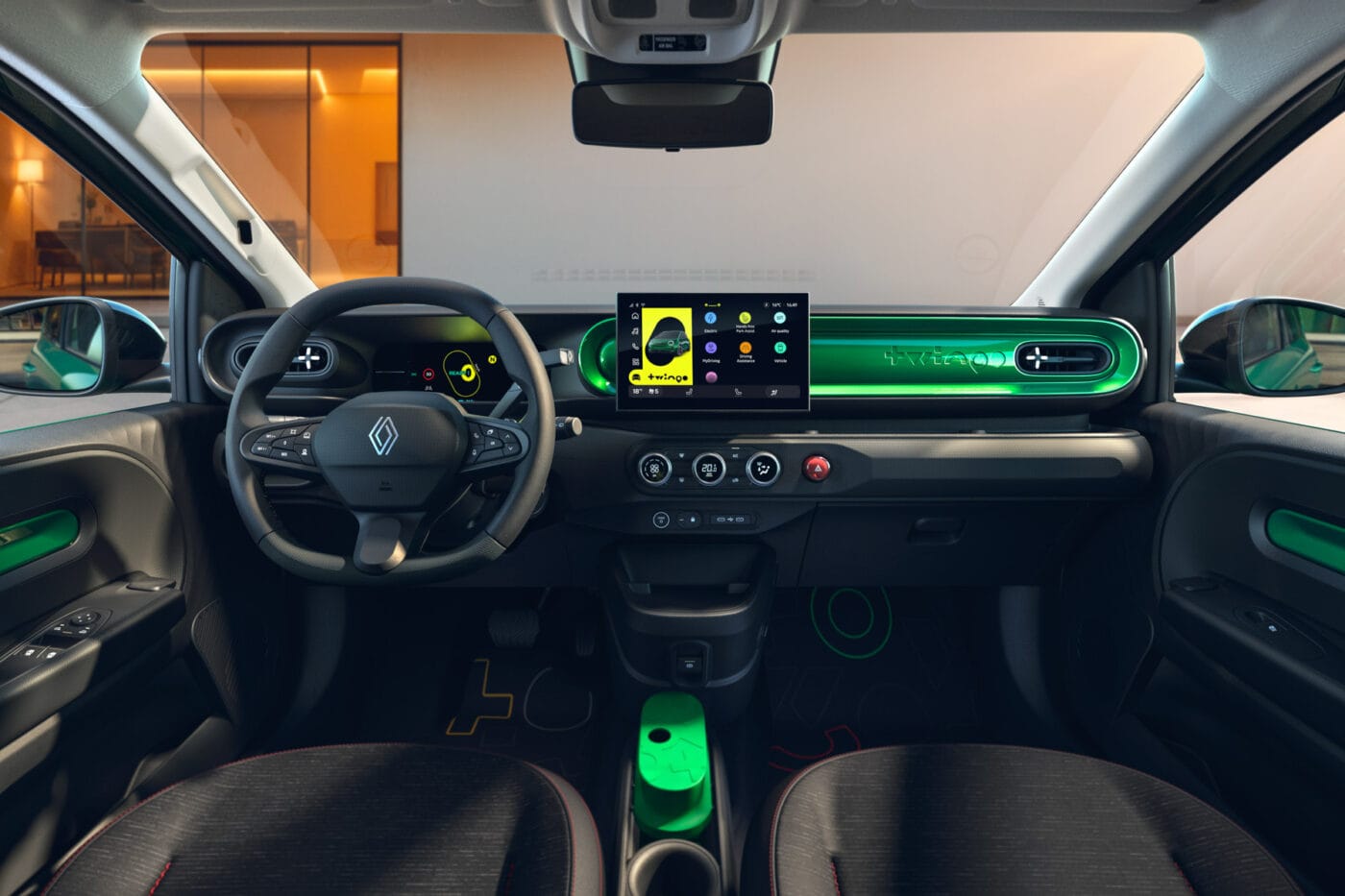
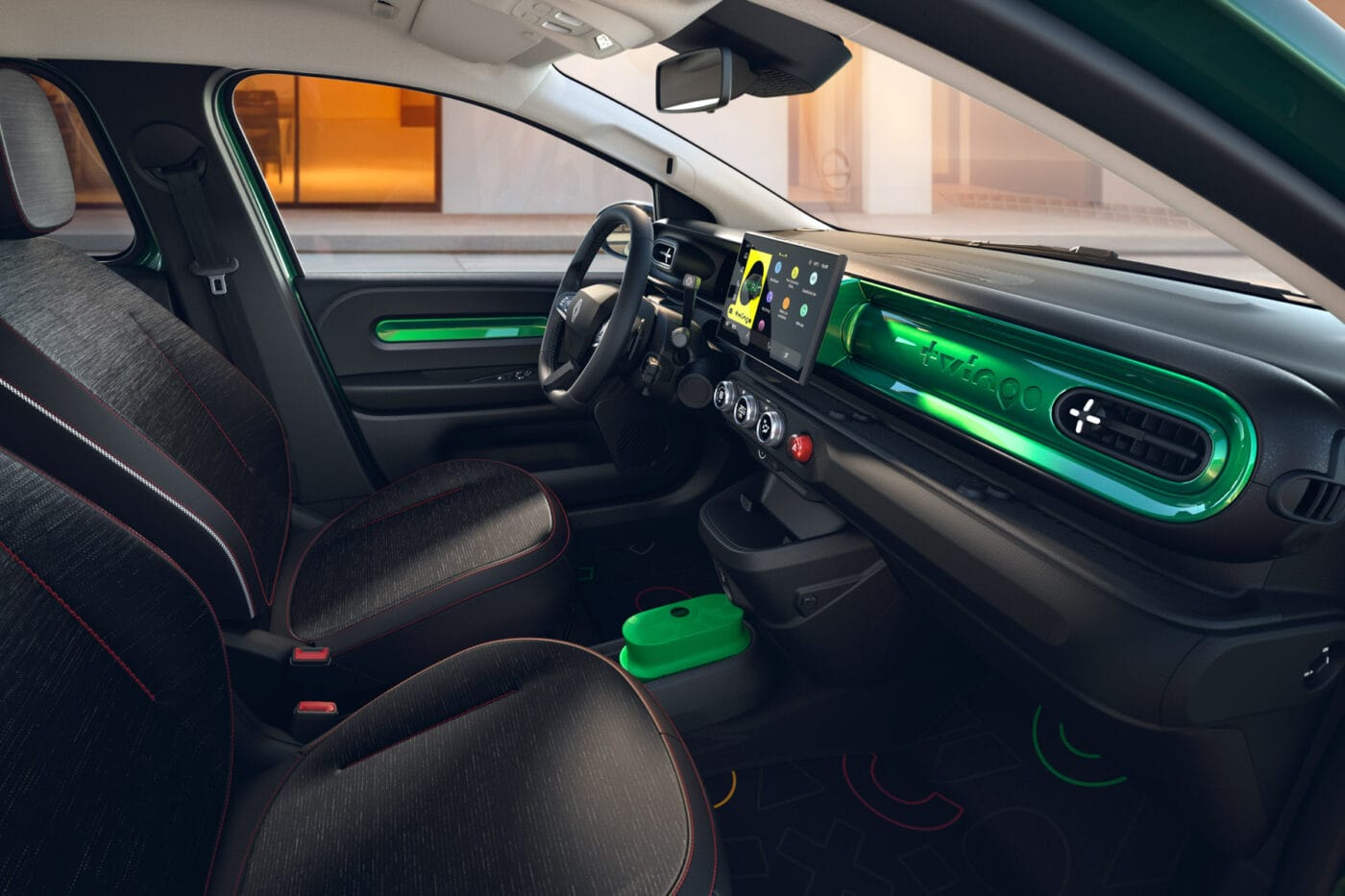
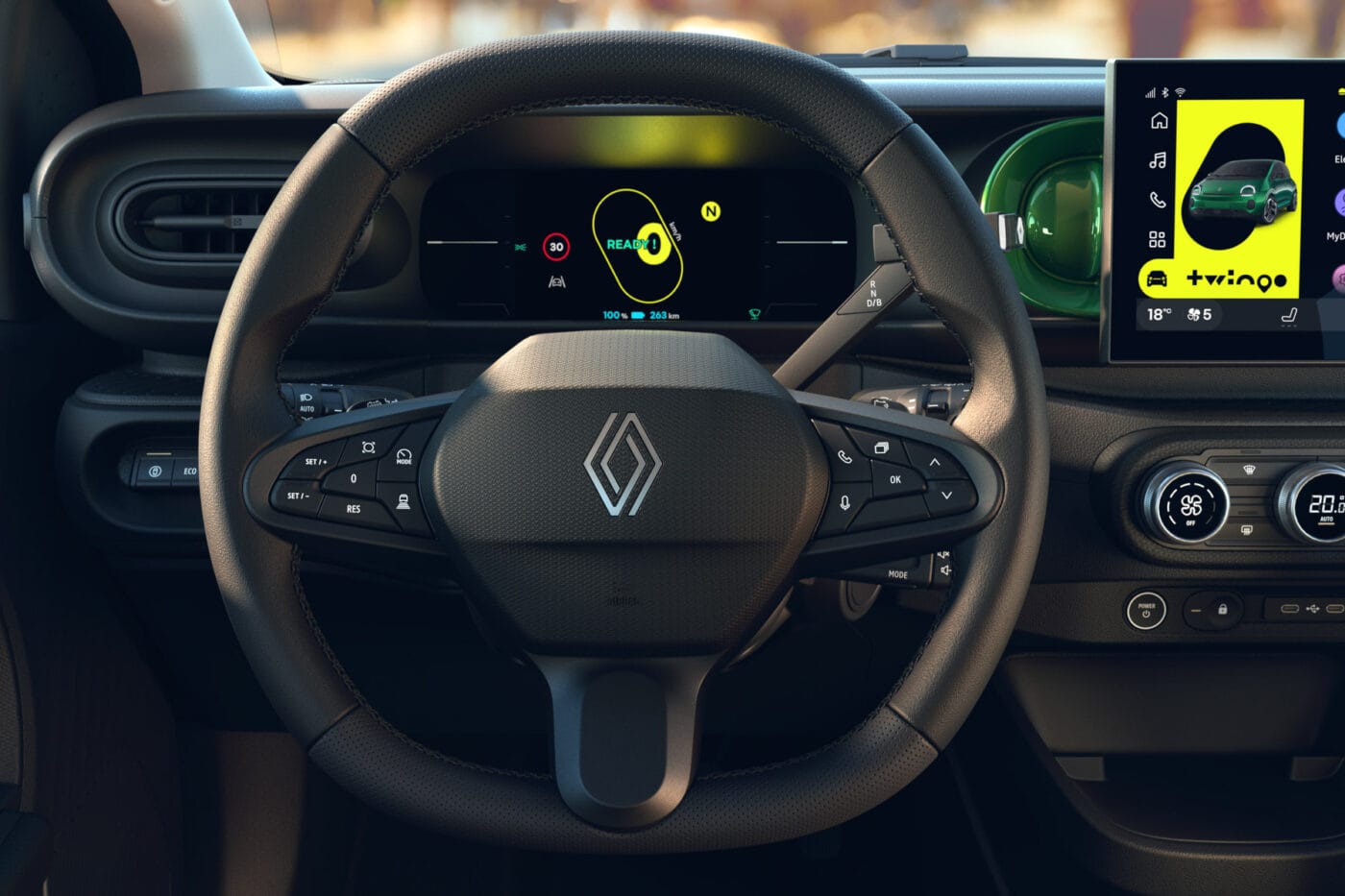
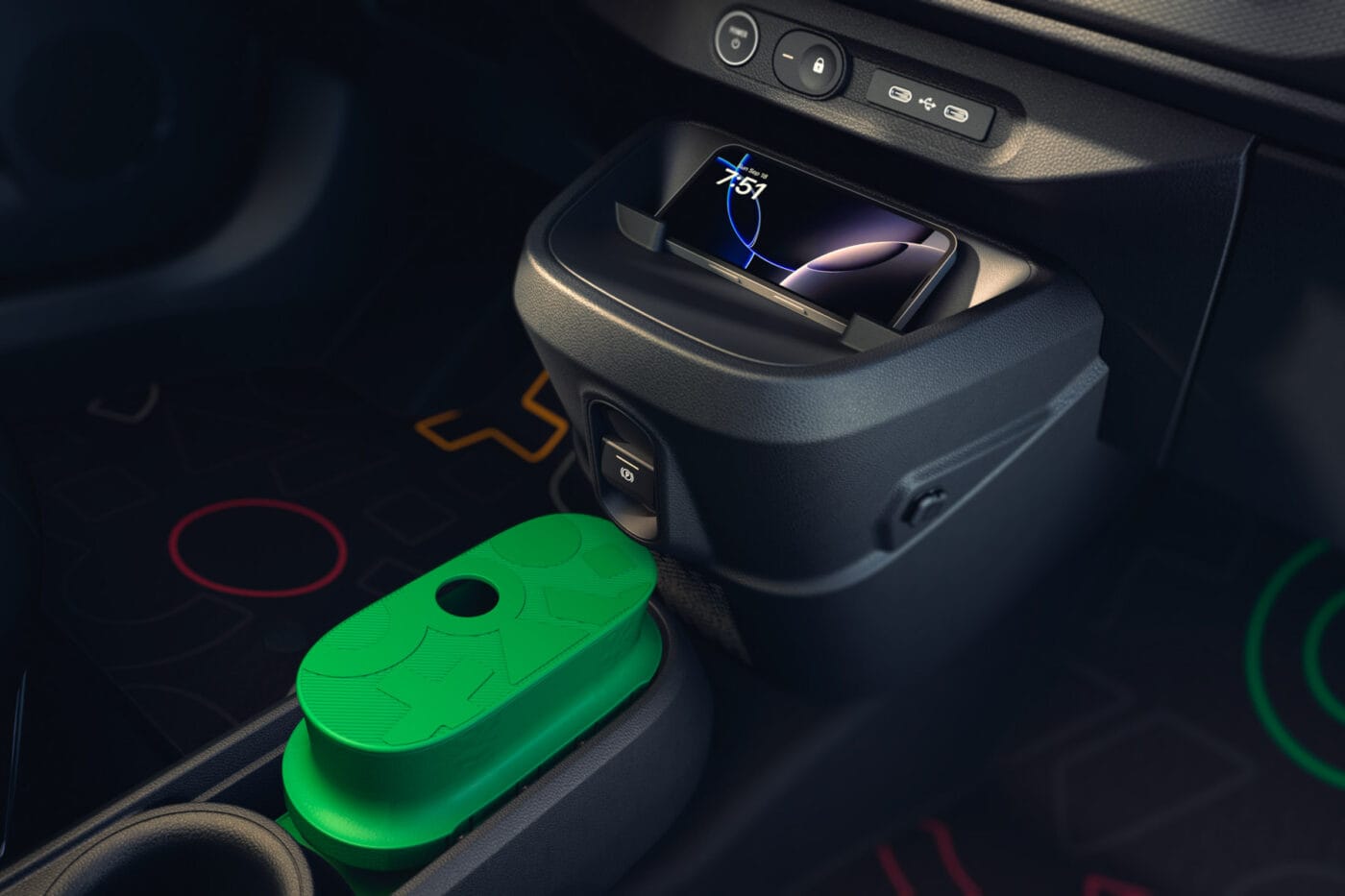


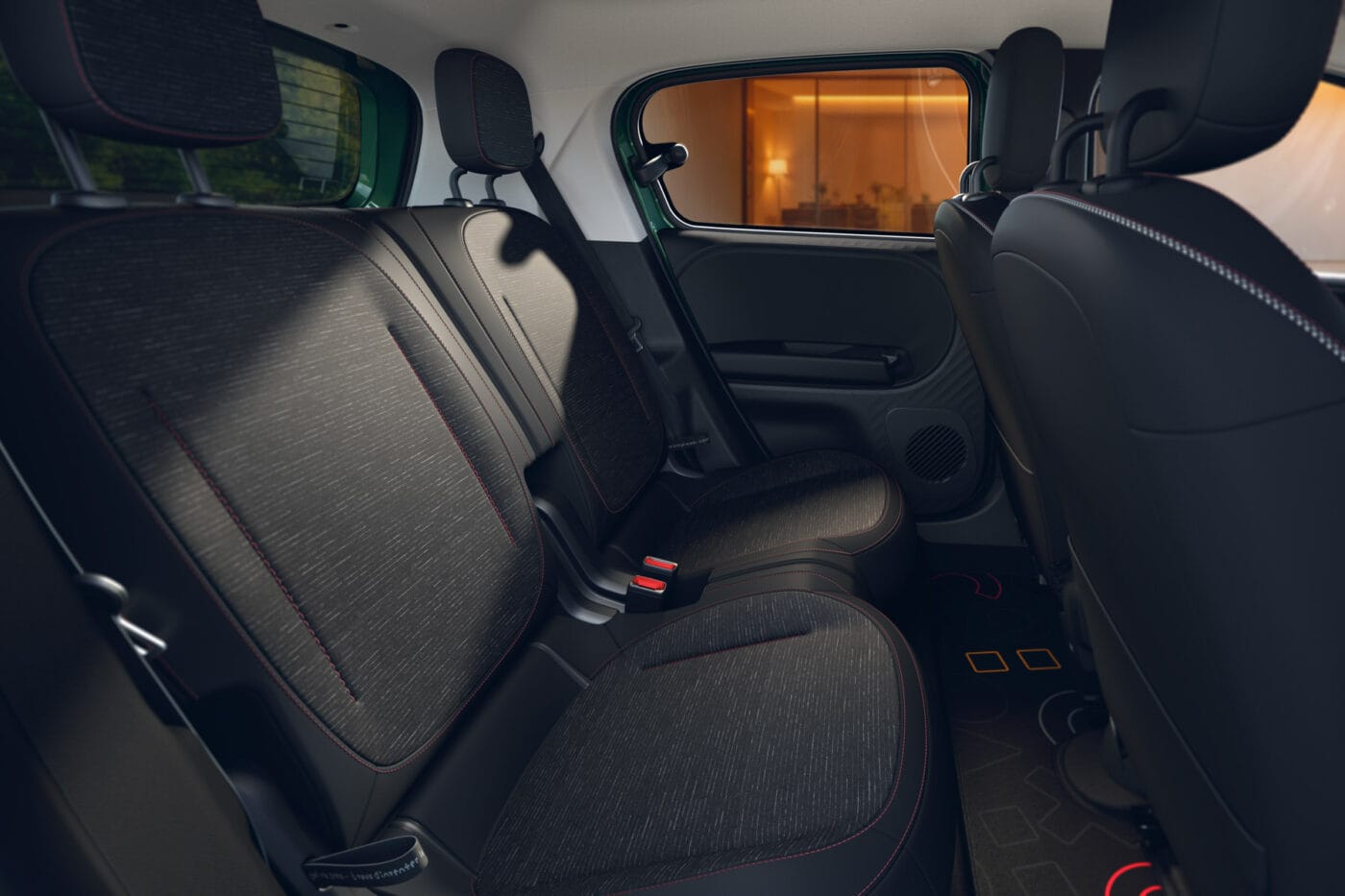
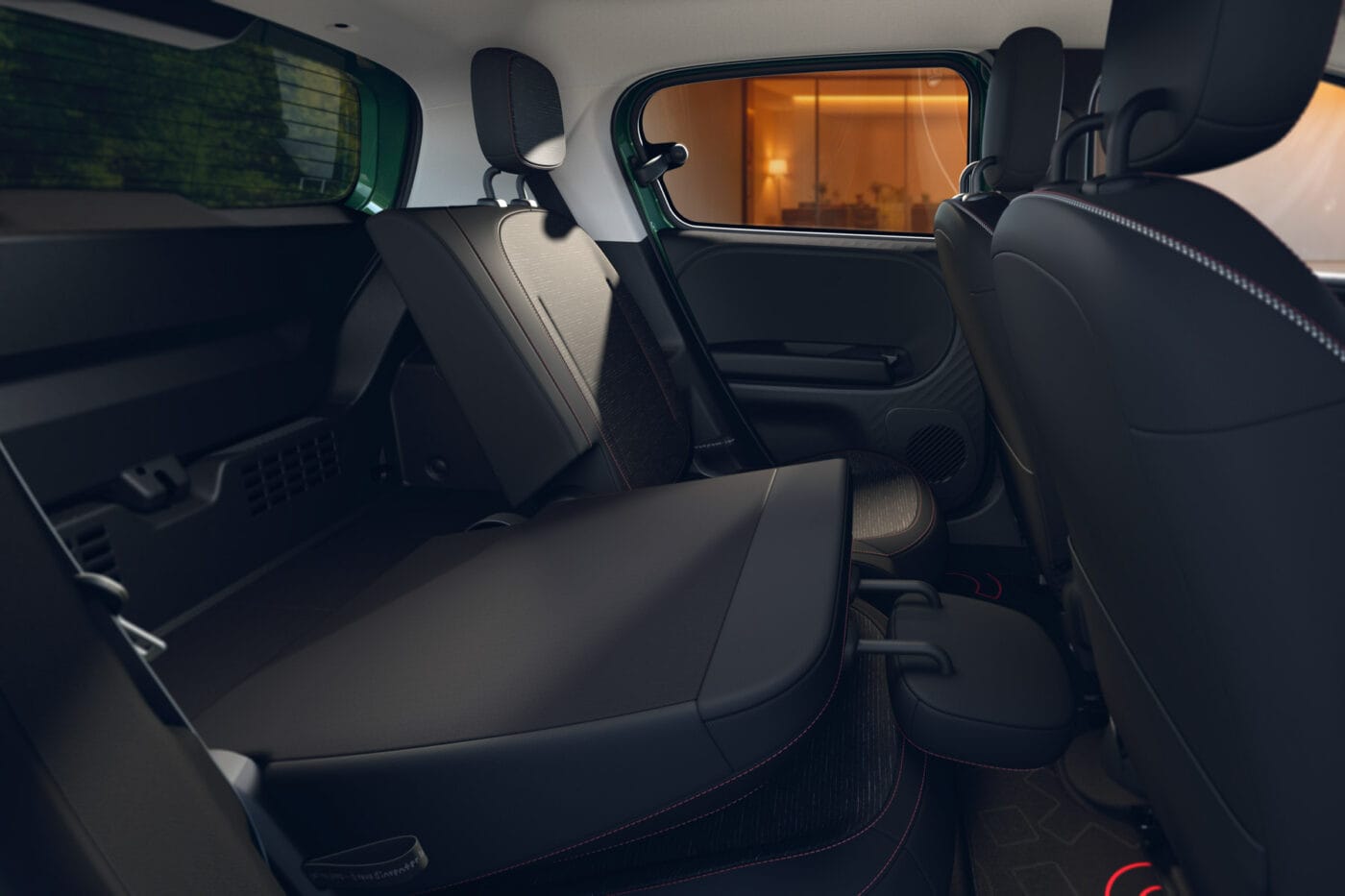
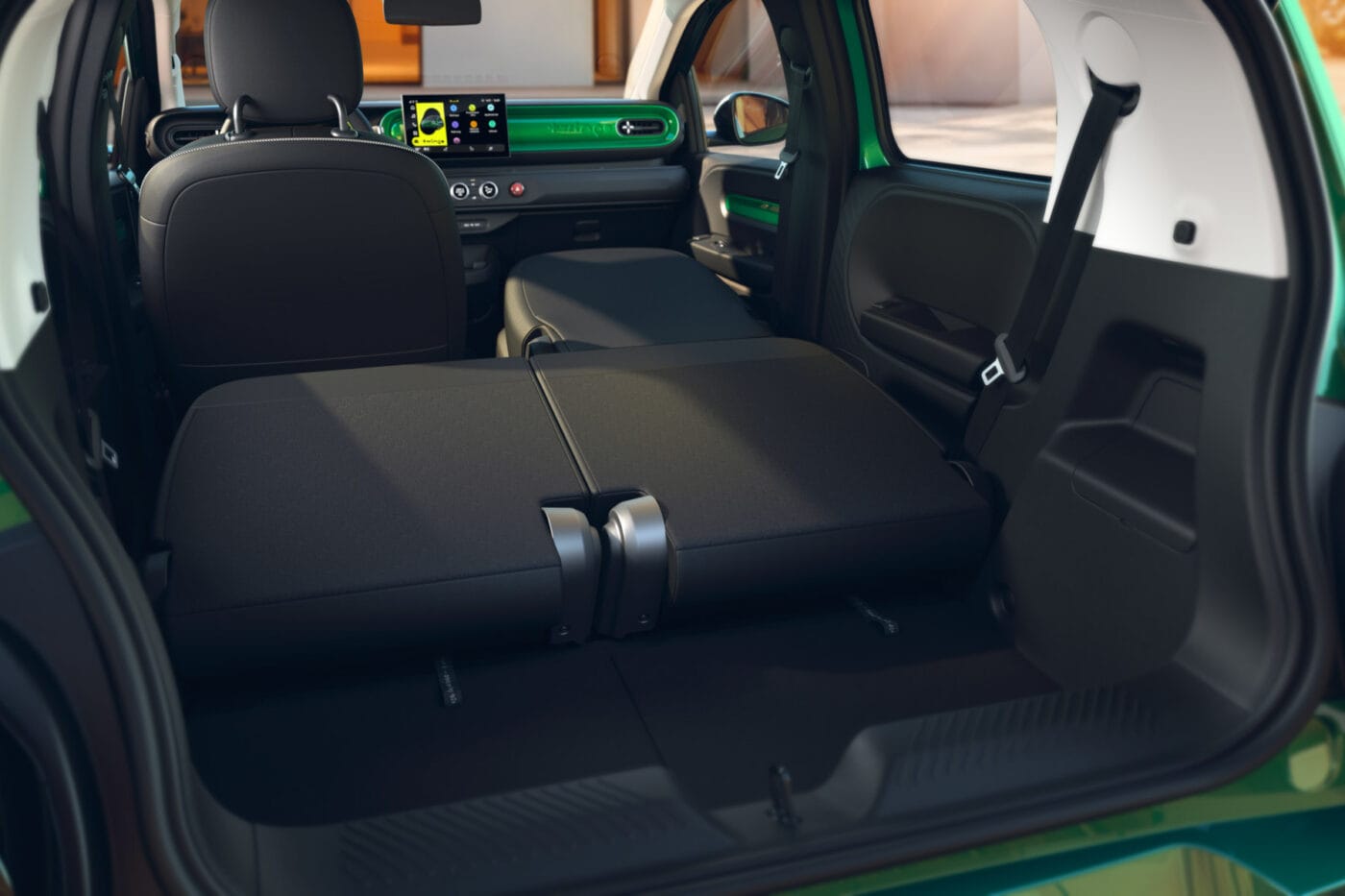
Renault also promises four “true” adult-sized seats, made possible by a feature inspired by the original Twingo: the two rear seats can slide independently by up to 17 centimetres. This allows owners to choose between 360 litres of boot space or 160 millimetres of knee room in the back.
Renault streamlines its portfolio
The Twingo E-Tech Electric is based on the AmpR Small platform, which also underpins the Renault 5 and Renault 4, albeit with several adjustments. The front axle is identical, but the cost-optimised rear swaps the multi-link setup for a flexible beam axle derived from the Renault Captur. The wheels have been pushed further towards the corners, reducing the rear overhang to just 55 centimetres.
To further control costs, Renault has simplified many design choices. The new Twingo comes in only four colours – red, yellow, black and “Absolut Green”, matching the concept car’s paintwork. Previous generations might have offered ten colours, requiring more complex production planning. Similarly, where the Megane E-Tech Electric had eleven separate air conditioning system variants, the Twingo uses a single simplified design defined early in development.
Despite these changes, the development process was unusually fast. The Twingo is the first Renault developed under the “Leap 100” programme – completed in just 100 weeks, or under two years. And while the car will be built at Renault’s Novo Mesto plant in Slovenia, the rapid development was driven by what Renault calls “China speed”.
Production in Europe, development in China
“Offering an affordable and competitive electric city car required more than simply adjusting the price. Renault had to rethink its entire design and production process,” the company says. “The Twingo E-Tech Electric was developed faster than any other model in Renault’s history.” Despite being developed in half the usual time, it meets “the group’s latest quality standards,” which Renault cites as proof of its ability to keep pace with a fast-changing market.
The key element behind this speed lies in the collaboration between Ampere in France, the Novo Mesto plant, and ACDC – Renault’s research and development centre in Shanghai, focused exclusively on electric vehicles. While Ampere developed the platform, software, multimedia and driver assistance systems, the entire powertrain engineering came from China. The Shanghai facility “advanced the project by working closely with local partners and new industry players” – namely CATL for the battery system and Shanghai E-Drive for the motor.
Renault concludes: “This joint effort shortened the usual development times and optimised costs without compromising quality.” That may be true – but it also highlights a new reality: for genuinely integrated and cross-functional vehicle development, China is now indispensable. Not only in manufacturing or component sourcing, but increasingly in engineering itself.
The result, however, is impressive – especially for an entry price below €20,000 before incentives.
Source: Information via e-mail (in German)

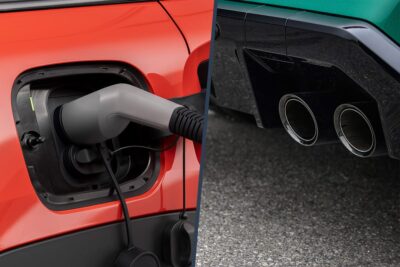
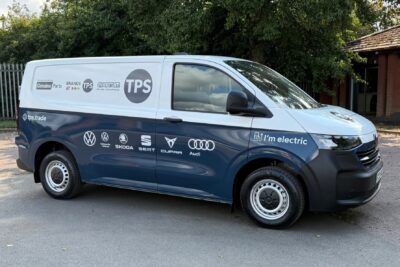

0 Comments